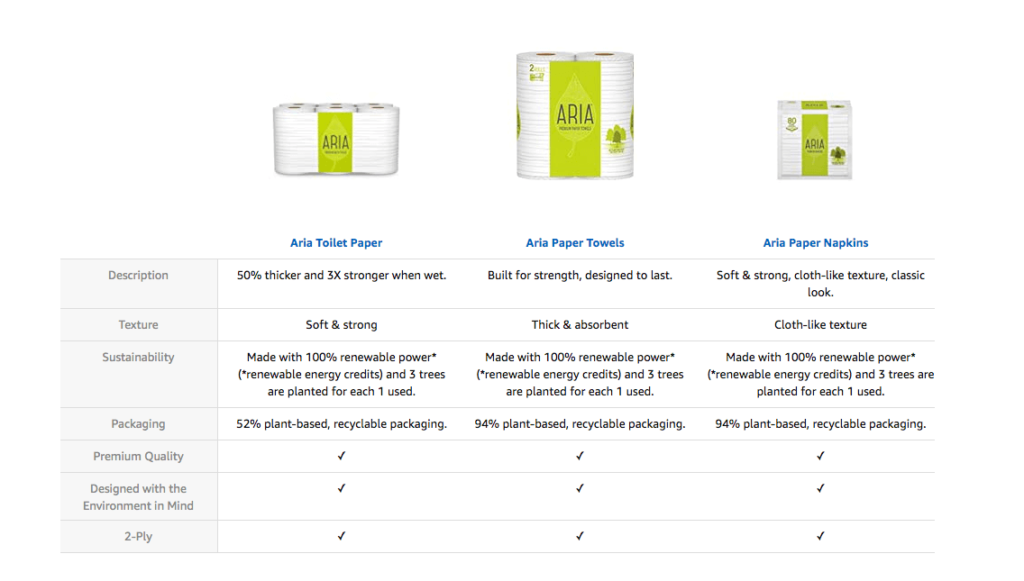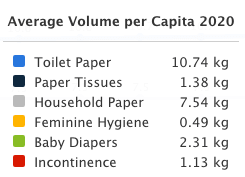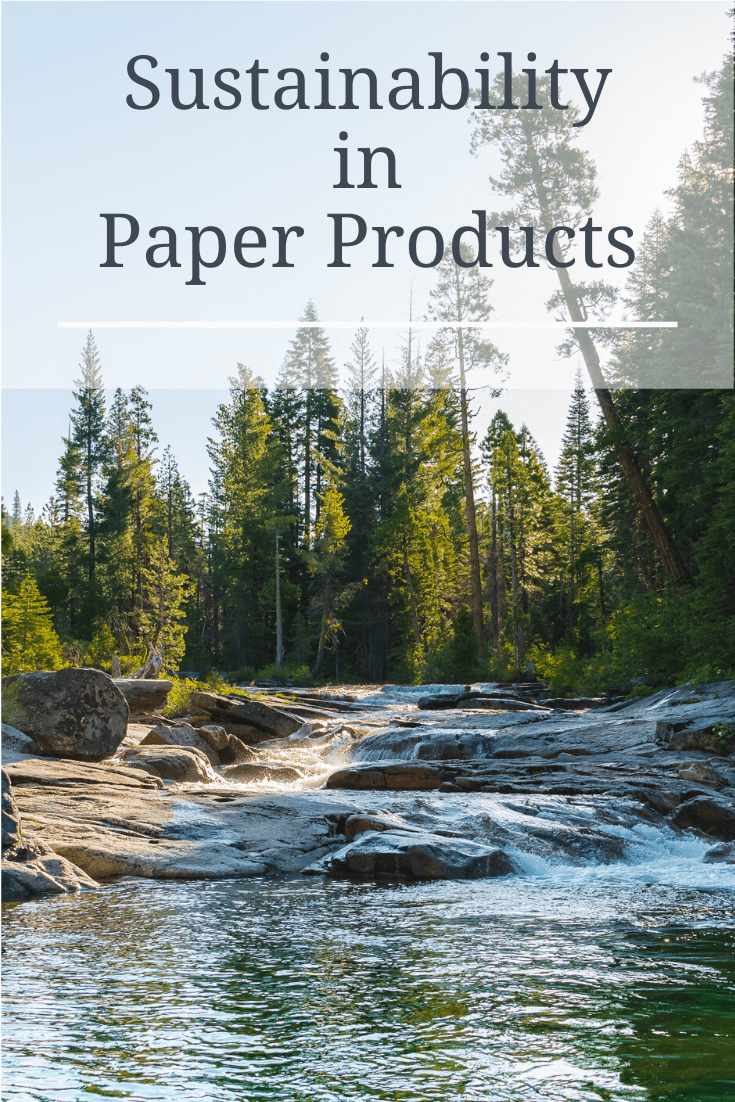When it comes to choosing sustainable paper products, it turns out there are a lot of factors to consider. Contributors to sustainability include natural resource conservation, renewable energy for manufacturing, emissions, recyclable products, supply chain transparency, social impact, and good stewardship. A lot goes into those Vanity Fair napkins, Brawny paper towels, and Angel Soft rolls of toilet paper. Learn what one company, Georgia-Pacific, is doing to address these concerns, and how to choose sustainable paper products for yourself.
FTC Disclosure: This post is sponsored by Georgia-Pacific. All thoughts and opinions are my own. #GeorgiaPacificPartner

Personal Disclosure: GP reached out for me to talk about their paper products and offered for me to perform my own due diligence before including them in this post. In addition to paid compensation for mentioning their brand by name and several talking points, I am donating a portion of my sponsored proceeds to Trees Atlanta, where Georgia-Pacific is headquartered, and just so happens to be a big contributor towards this nonprofit as well.
Table of Contents
The Lumberjack

Some years ago, I went on a ride-along with a retired lumberjack. Barrel chested and soft-spoken, with a laugh that came easy, he was in his 70’s, if not 80’s. I was receiving a tour of some secluded spots to hike around in Northern California.
As we drove up and down hills and mountains, he spoke nonstop, telling me of jobs and stories of his life in the logging industry. This lumberjack of an era gone by would constantly interrupt himself, pointing out trees. “That there is a yellow pine,” was repeated so much you’d think I’d have memorized the species, but alas, too much time has gone since and I’m out of practice.
At the beginning of our conversation, I had the impression that it was mostly a job for this guy and there was no way he was a conservationist. As I gleaned knowledge of his life, I was surprised by how passionate he was about the health of the forest. He didn’t want to be associated with those who practiced clear-cutting and didn’t consider the plant life and animals.
My impression of what kind of person a logger or lumberjack is turned upside down with this newly gained perspective. This old lumberjack took such pride in caring for the trees. He spoke of selective logging and how it is actually beneficial to the forest and habitat. He talked of mitigating forest fire risk, saving animals on the job, and monitoring rare trees.
Now, years later, as I continually research and learn ways to improve my own sustainability at home, I found myself down the rabbit hole of paper products. How sustainable is toilet paper? Paper towels? How can I make sure I am doing good? Which habits should I be adjusting?
Georgia-Pacific is one of the largest paper product companies in the United States, which seemed like a good place to start. The consumer line of products are in around 65% of households and is commonly found in commercial settings from offices, hospitals, and schools.
Paper Product Stats in the United States
- The average person uses 700 pounds of paper per year.
- The average person spends $107.08 on paper per year.
- $33,444M worth of tissue and hygiene paper was sold in the first half of 2020 alone.
- Twice as much wood is grown than is harvested.
- 56% of forests are owned by individuals and companies.
- Paper consumption in the last 20 years has increased 126%.
- 44.2 million tons of paper and paperboard were recycled in 2017, which is 65.9% of all paper.
Single Use Products

In researching how paper products are made and the numerous recycling and sustainability practices in place, paper remains a cheap commodity. Alongside strong industry initiatives to reduce greenhouse gas emissions, fossil fuel consumption, water supply impact, and air pollution during the production and manufacturing processes, waste on the consumer level remains high.
The environmental impact should not be left wholly for paper companies to adhere to, but consumer consumption as well.
Paper product consumption has grown 400% in 40 years around the world. 6.5 million trees were used to produce 16 billion coffee paper cups for US consumers in one year. With a population of 331 million in 2020, that is 48 paper cups per capita, or per person each year.
Discarded paper products made up over 14% of waste that ended up in landfills in 2014.
Recycle or Compost
While you cannot recycle paper products like paper towels, reusing them when possible contributes toward a net-positive environmental impact. Instead of tossing your paper in the garbage when done, consider putting paper towels into your compost bin.
Some cities, such as Denver, CO, have introduced recycling programs for specific paper products, such as paper cups. The city’s recycling department reports about 3,000 tons of cups, containers, and paper bags are generated annually, with only 10% of that being recovered. The city is pushing ambitious goals to greatly increase the recovery and recycling rate. New York City, Seattle, San Francisco, and Washington D.C. are some of the other large cities with paper cup recycling programs.
In addition, purchasing 100% recycled paper products brings you as the consumer another step closer to being eco-friendly. Georgia-Pacific makes “100% RECYCLED FIBER HARDWOUND ROLL PAPER TOWEL” which is rated as one of the most eco-friendly paper towels in the world by third parties. An unbleached product, this is the perfect candidate to add to your compost after use.
If every household in the United States used one roll of paper towels with 100% recycled paper, 554,000 fewer trees would be harvested.
Georgia-Pacific took it a step further with their Aria paper product line. 100% renewable power is used, three trees are planted for each tree used, and packaging uses 94% plant-based, recyclable material.


Wood Waste from Paper Product Manufacturing
One piece of the puzzle on paper product sustainability is the byproduct waste. What happens with extra wood from the harvest? Georgia-Pacific has their own process which allows them to use every single part of a tree harvested. GP takes the waste, which includes bark, wood residues, and by-products from pulping wood fiber, and turns this combined waste into biomass fuel.
For the company as a whole, 55% of all energy used to run the plants and mills comes from this biomass. One of their facilities is able to generate over 90% of all electricity by using biomass.
GP studies indicate using biomass is a sustainable and environmentally responsible energy source.
In an analysis by Ecofys in 2012, the entire paper and printing sector contributes less than 1% to the global greenhouse gas inventory due to the very high use of renewable energy, mostly biomass. Since 2012, Georgia-Pacific alone has greatly decreased its greenhouse gas output.
Sustainability on a Larger Scale

In 2010, Georgia-Pacific embarked on a decade-long campaign for Endangered Forest Mapping. GP worked with the University of Georgia to design a geographic information process, creating data sets of the forests in the 19 states where GP sourced wood for their paper products.
The purpose of the data sets and forest mapping was to identify forests with rare qualities or with characteristics of endangerment. As each area completed its mapping data, GP set up continual monitoring to ensure they are not receiving fiber from them and the forests are protected. In some situations, GP embarks upon active forest management to improve habits for endangered, rare, or vulnerable species, from the northern spotted owl to eastern indigo snakes, and even the Louisiana black bear.
All in all, 6.6 million acres of endangered forests and special areas were mapped and are now annually monitored and cared for.
Many of these land stewardship practices and environmentalism have expanded through scale and technology, since the early 1900s. Georgia-Pacific is one such example of a paper-producing company that has recognized how important sustainability is.
For each tree GP uses, at least 1 tree is regrown in the U.S. – and 3 for some brands, such as Aria.
As part of the company’s long-term strategy, GP continues to remove finite resources and waste from their systems and processes. Renewable resources and recycling of paper help position GP Recycling as one of the world’s largest buyers and sellers of recycled fiber.
Georgia-Pacific has a lot more information on their conservation and sustainability practices here and here.
Sourcing Paper Products

Photo: Exploring the trees around Bassi Falls.
Companies and individuals purchasing paper products should take care in making sure the companies they purchase from are sustainability sourced. There are multiple third-party certifications and audits to verify the company is practicing sustainable forest management and paper production.
Georgia-Pacific is one such company that lists numerous third-party certifications and awards to ensure the purchaser is making responsible purchasing decisions.
- Biodegradable Products Institute (BPI®) for compostability (GP Pro)
- ECOLOGO® UL 175 standard establishes human health and environmental criteria for the certification of sanitary paper. (Georgia-Pacific products)
- Forest Stewardship Council (Certificate)
- USDA Biopreferred® Program (GP Cheat Sheet)
- Greengard Emission Certification (GP Certified Products)
- Home Innovation NGBS Green Certified
- Green Seal (GP Certified Products)
- LEED
- Programme for the Endorsement of Forest Certification (PEFC) (Certified GP Products)
- Safe Quality Food Institute
- Sustainable Forestry Initiative (SFI) (GP Certifications)
- SFI Chain-of-Custody (COC) Standard
- UL Responsible Sourcing
- Wildlife Habitat Council Conservation Certification
Pin This:

- About the Author
- Latest Posts
I strive to paint vivid landscapes with my words, bringing the magic of far-off lands and enchanting aromas to life for my readers. Combine passion for exploration and the art of gastronomy in an unending ode to the senses. When I’m not traversing the globe, I find solace in the earth beneath my fingertips, tending to my garden and working on projects around my verdant oasis. MK Library serves as a beacon, guiding fellow travelers and homebodies alike to embrace sustainability, nurturing both our planet and our souls with purpose. Full Bio.

